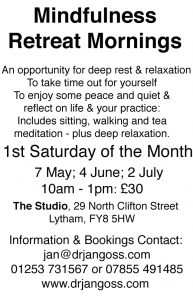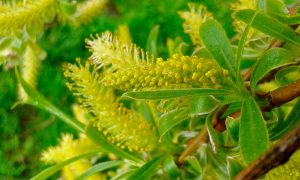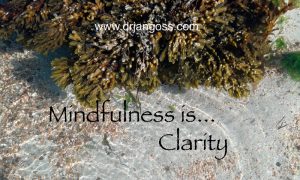Untying the Knots
Mindfulness teacher Thich Nhat Hanh, explains that mindfulness gives the understanding we need to untie the ‘knots’ that have formed within us through the course of our everyday life. Every encounter, every word, everything we witness, has the potential to form or release inner tensions. He says:
When someone says something unkind to us for example, if we do not understand why he has said it and we become irritated, a ‘knot’ will be tied in us… If we practice mindfulness, we can learn the skill of recognising a knot the moment it is tied in us, and find ways to untie it. These knots need our full attention as soon as they form, while they are still loosely tied, so that the work of untying them will be easy (Thich Nhat Hanh, 2011, Your True Home).
Practising mindfulness gives us a skills set that enables us to do the work of untying our inner knots and more importantly, as stated above, to notice when they are being tied, so that we can prevent them forming in the first instance!
We often talk about being tied in knots when we are confused and anxious. I find it a really helpful analogy that highlights the tightness that usually occurs in the body when we become ‘stressed’. The stress response sees the muscles contract or tighten, affecting our breathing, blood pressure and our heart rate. When we are in this state, each cell in our body contracts and is unable to function efficiently, and this is quite often the cue for a physical illness, as our immune system becomes less efficient under duress. Somewhat paradoxically, the stress response highlights the importance of being relaxed, not simply for our mental and emotional wellbeing, but also for our physical health.
A greater sense of inner peace, achieved through mindfulness practice, has been shown to strengthen our immune system. Naturally, this makes sense, we know that mind and body are intertwined, not separate – working with (or neglecting, or abusing) one aspect of our self impacts on the other. This is something I love about mindfulness – it is a truly holistic practice. So, I know that as I practice the meditation technique I am simultaneously caring for my physical body, my psychological health and my emotional wellbeing. Knowing this, helps me to make the time to practice.
Note to Self: Avoid Knot-Tying Behaviours!
Last week I watched a film called The Divide, a candid and emotive documentary account of seven people’s lives (American and British) – that lays bare their ‘knots’. I have also been reading Chavs: The Demonization of the Working Class by Owen Jones…
Both the book and the film are well documented and heart-felt, but I could feel knots forming in me, as I watched and read. I avoid newspapers and the TV for this very reason – I know that the drip, drip effect has detrimental consequences and that the reporting is often constructed to create fear, intolerance and anger in the recipient, and I choose not to water those painful emotional ‘seeds’ within myself.
Thankfully, I am also studying the Fourteen Mindfulness Trainings as part of my lay ordination, which is scheduled for the 30th May! This month I am working with the fifth training on ‘Compassionate, Healthy Living’ which guides us to be mindful of what we are inputting, and to ‘consume in a way that preserves compassion, wellbeing, and joy in our bodies and consciousness and in the collective body and consciousness of our families, our society, and the earth.’
Reading this training, I am reminded that neither the book or the film are fulfilling these criteria!
So I have picked up my copy of Peace of Mind which I know will ‘water the seeds’ of peace, joy and love in me, and that ‘watering’, combined with my daily meditation practice will help to loosen and untie some more of my knots!
As I go about my daily life I shall continue to ask my self the question: ‘Which seeds am I watering in this moment?’
And so, this is an invitation for you to ask your self that question too…



